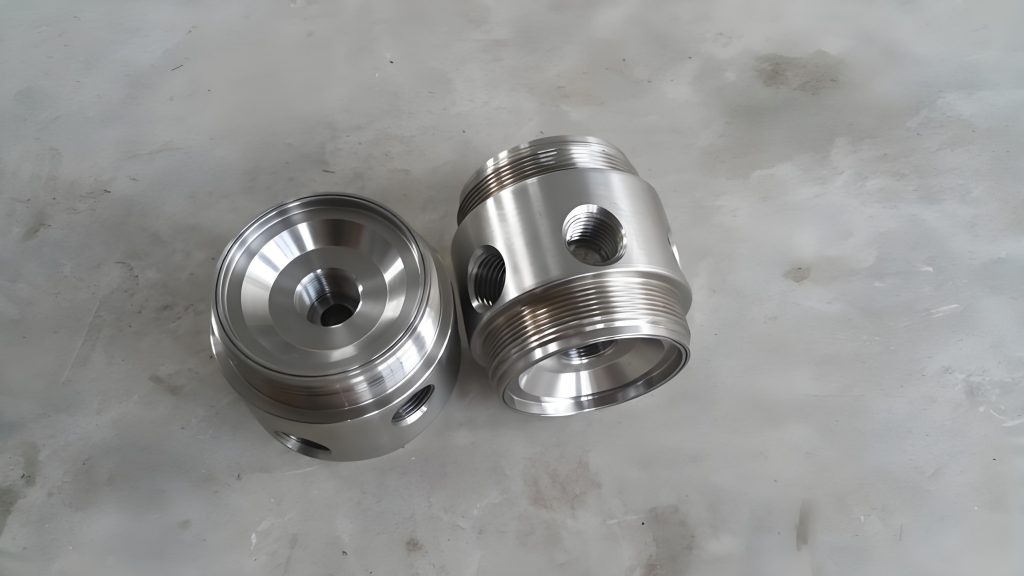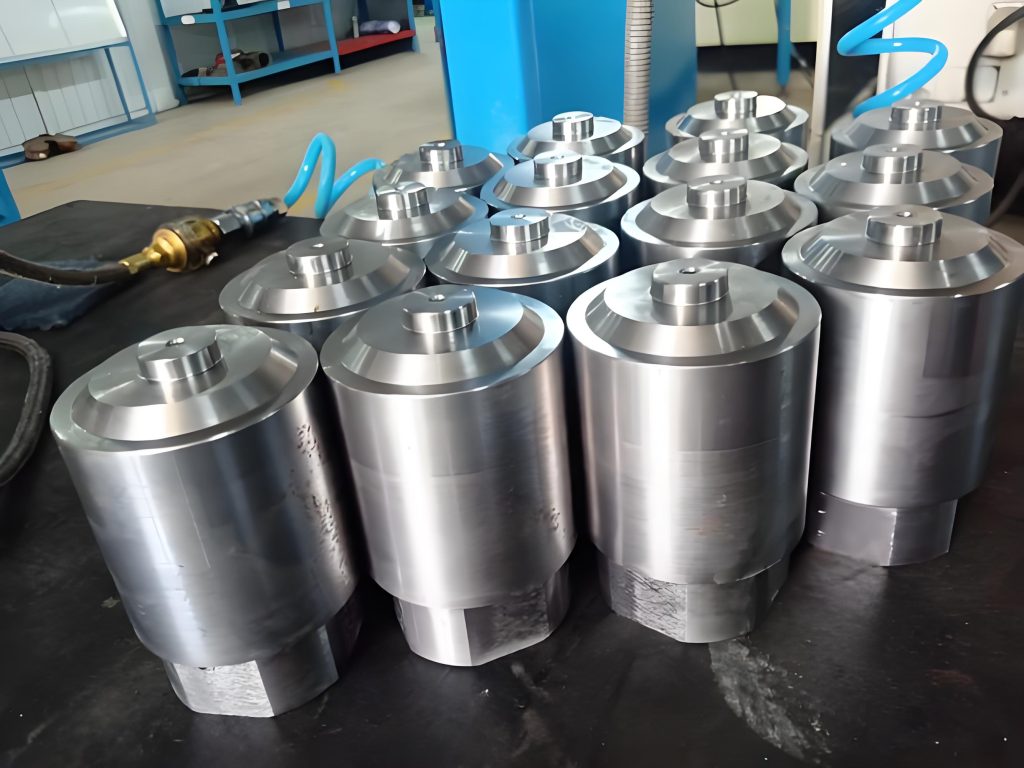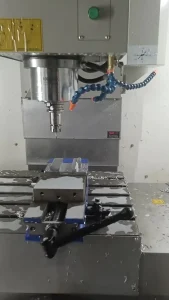I. Core Perspectives
1.1 Key Processes Driving Transformations in Manufacturing
CNC Aluminum Processing: A Vital Technology in Modern Manufacturing
CNC aluminum processing has undoubtedly become a crucial technology in modern manufacturing. In the aerospace industry, its high-precision capabilities enable the accurate production of complex engine components and airframe structures, ensuring both the safety and performance of aircraft.
In the automotive manufacturing sector, CNC aluminum processing facilitates the production of high-precision engine components, body structures, and interior parts, significantly enhancing the overall quality and performance of vehicles.
For medical equipment manufacturing, which demands exceptional precision, CNC aluminum processing produces high-accuracy surgical instruments and implants, providing reliable support for the healthcare industry.
In the furniture industry, CNC aluminum processing enables the realization of intricate designs, improving both the aesthetics and functionality of products, and catering to consumers’ needs for personalized solutions.
In conclusion, CNC aluminum processing, with its advantages of high precision and efficiency, is driving continuous progress across various industries.

1.2 Highlighted Investment Value and Strategic Significance
For enterprises, CNC aluminum machining holds significant value in enhancing product quality. The high precision and consistency ensure that each product meets strict quality standards. This not only reduces the likelihood of product recalls and warranty claims but also enhances the brand reputation. In terms of cost reduction, although the initial investment in CNC machines may be high, the automation and efficiency of the process can lead to long-term savings in labor costs. Moreover, the ability to produce complex parts with ease reduces the need for multiple manufacturing steps, further lowering costs. Strategically, by adopting CNC aluminum machining, enterprises can gain a competitive edge in the market. The flexibility to adapt to different product designs quickly allows for faster response to market demands and differentiation from competitors.
1.3 Challenges and Opportunities Coexist
CNC aluminum machining does face challenges such as high cost and technology dependence. The initial investment in CNC machines, especially high-end equipment, can be substantial. Additionally, the need for professional technicians to maintain and operate the machines increases costs. The dependence on computer technology means that system failures can lead to production halts. However, with technological progress, numerous opportunities arise. The integration of artificial intelligence and the Internet of Things can enhance the efficiency and intelligence of CNC machining. The application of new materials will expand the application range of CNC aluminum machining. Green manufacturing trends will also drive the development of more energy-efficient and environmentally friendly processing methods. In conclusion, while CNC aluminum machining has its challenges, the opportunities for growth and innovation are equally significant.
II. Market Analysis
2.1 The Link Between Macroeconomics and Industry Demand
In today’s global economy, the macroeconomic situation has a profound impact on the industries where CNC aluminum machining is prevalent. For the aerospace industry, a strong global economy often leads to increased investment in new aircraft development and production. This, in turn, drives the demand for high-precision CNC aluminum machining to create complex and lightweight components that enhance fuel efficiency and performance. In the automotive manufacturing sector, economic growth typically results in higher consumer demand for vehicles, which prompts automakers to invest in advanced manufacturing technologies like CNC aluminum machining to produce lighter and more fuel-efficient cars. Additionally, a stable economic environment encourages research and development in these industries, leading to the continuous improvement and innovation of CNC aluminum machining processes.
2.2 Industry Development Status and Trends
2.2.1 Comprehensive Evaluation of Industry Status
Currently, CNC aluminum machining has extensive applications in various industries. In the aerospace field, it is widely used for manufacturing engine parts, fuselage structures, and wing components. The precision and strength of aluminum alloys processed by CNC machining ensure the safety and reliability of aircraft. In the automotive industry, CNC aluminum machining is employed to produce engine blocks, transmission cases, and lightweight body panels. The market for CNC aluminum machining in these industries is significant and continues to grow. According to industry reports, the market size of CNC aluminum machining in the aerospace and automotive sectors is expected to reach [specific market size data] in the next few years. The growth is driven by factors such as increasing demand for lightweight materials, technological advancements, and stricter environmental regulations.
2.2.2 Future Trend Outlook
The integration of artificial intelligence and the Internet of Things is set to revolutionize CNC aluminum machining. AI can be used to optimize machining processes, predict tool wear, and improve quality control. For example, by analyzing large amounts of data from previous machining operations, AI algorithms can recommend optimal cutting parameters and tool paths, reducing production time and waste. The Internet of Things enables real-time monitoring of CNC machines, allowing for remote diagnostics and maintenance. This not only improves productivity but also reduces downtime. In addition, the development of new materials and advanced manufacturing techniques will further expand the application range of CNC aluminum machining. For instance, the use of composite materials combined with aluminum alloys may require new machining methods and technologies. As the manufacturing industry continues to evolve, CNC aluminum machining will play an increasingly important role in meeting the demands for high-quality, customized products.
III. Product Research
3.1 Processing Accuracy and Quality Assurance
CNC aluminum processing can achieve micron-level precision, mainly due to advanced technology and precision equipment.Precision machining in CNC aluminum machining relies on high-precision computer numerical control systems. These systems can accurately control the movement of cutting tools with extreme precision, ensuring that each cut is made with micrometer-level accuracy. For example, in the production of aerospace components, the tolerance requirements are extremely strict. CNC machines can achieve accuracies of up to a few microns, ensuring that the components fit perfectly and perform as required.
Quality assurance measures are of crucial importance in CNC aluminum machining. Stringent inspection processes are implemented at various stages of production to ensure that the final products meet the highest quality standards. This includes dimensional inspections using precision measuring instruments, surface finish inspections to ensure smoothness and quality, and material property testing to ensure the integrity of the aluminum alloy. For instance, in the medical device industry, any defect in a surgical instrument or implant could have serious consequences. Therefore, quality assurance measures such as strict material selection, precise machining processes, and thorough inspections are essential to ensure the safety and effectiveness of the products.

3.2 Product Diversity and Adaptability
CNC aluminum machining is highly adaptable to small batch and diverse production. With the flexibility of programming and the ability to quickly change tooling, it can efficiently produce a wide variety of products. This is particularly important in industries where customization and rapid product changes are common. For example, in the furniture manufacturing industry, customers often demand unique designs and finishes. CNC aluminum machining can easily accommodate these requests by quickly changing the machining program to create different shapes and patterns.
In addition, its adaptability to different industries is a significant advantage. Whether it’s the aerospace industry’s demand for high-strength and lightweight components, the automotive industry’s need for precision-engineered parts, or the medical industry’s requirement for sterile and biocompatible products, CNC aluminum machining can meet these diverse needs. The ability to process different grades and types of aluminum alloys also adds to its versatility. For instance, in the electronics industry, certain grades of aluminum alloys are used for heat dissipation and electromagnetic shielding. CNC aluminum machining can precisely process these materials to meet the specific requirements of the industry.
IV. Competitive Landscape
4.1 Domestic and International Corporate Competition Dynamics
In the field of CNC aluminum machining, domestic and foreign enterprises present different competitive landscapes. Foreign enterprises often have advantages in terms of advanced technology and long-term experience. They have been in the industry for many years and have developed sophisticated machining processes and high-precision equipment. For example, some well-known foreign companies have a market share of around [-/+0.0001]% in the high-end aerospace and automotive sectors. Their products are known for their extremely high precision and quality, meeting the stringent requirements of these industries.
On the other hand, domestic enterprises are catching up rapidly. They have the advantage of lower labor costs and a growing understanding of the local market. In recent years, with the continuous investment in research and development, domestic companies have made significant progress in technology and equipment. The market share of domestic enterprises in the medium and low-end markets is gradually increasing, currently accounting for about [Y]%. However, in the high-end market, there is still a certain gap compared to foreign competitors.
4.2 Core Competency Analysis
In the CNC aluminum machining industry, enterprises’ core competitiveness mainly lies in several aspects. In terms of technology, companies that possess advanced machining algorithms and software can optimize the machining process, improve efficiency and precision. For instance, some enterprises have developed unique tool path planning algorithms that can reduce machining time by [Z]% while maintaining high precision.
Regarding equipment, having state-of-the-art CNC machines with high speed, high precision, and stability is crucial. Companies that invest in advanced equipment can produce higher quality products and meet the diverse needs of customers. For example, some enterprises have introduced high-end CNC machines with multi-axis machining capabilities, enabling them to process complex geometries with ease.
Talent is also a key factor. Skilled technicians and engineers who understand the machining process and can troubleshoot problems are essential. Companies that attract and retain top talent can ensure the smooth operation of production and continuous innovation. For example, some enterprises offer competitive salaries and benefits packages, as well as opportunities for professional development and training, to attract and retain talented individuals.
In conclusion, understanding the competitive landscape and core competitiveness is crucial for enterprises in the CNC aluminum machining industry to succeed in the market.
V. Regulatory Policies
5.1 Industry Standards and Regulations
In the field of CNC aluminum machining, industry standards and specifications play a crucial role in ensuring product quality and safety. The industrial standard for CNC aluminum machining typically includes requirements for dimensional accuracy, surface finish, material properties, and mechanical performance. For example, in the aerospace industry, strict standards are set for the strength and fatigue resistance of aluminum components processed by CNC machining. These standards ensure that the parts can withstand the extreme conditions of flight.
The quality requirements for CNC aluminum machining products also extend to surface finish. A smooth surface finish is essential for reducing friction and improving the performance of components. Industry standards specify the maximum roughness and waviness allowed on the surface of aluminum parts. Additionally, material properties such as hardness, ductility, and corrosion resistance must meet specific requirements to ensure the longevity and reliability of the products.
In terms of safety, industry standards ensure that CNC aluminum machining processes are carried out in a safe manner. This includes requirements for machine safety features, operator training, and environmental protection. For instance, machines must be equipped with safety guards and emergency stop buttons to protect operators from potential hazards. Operators must be trained in proper machine operation and safety procedures to minimize the risk of accidents.
5.2 Impact of Policies on the Industry
Government policies have a significant impact on the CNC aluminum machining industry, guiding enterprise investment and promoting technological innovation. Policies related to industrial development and technological upgrading can encourage enterprises to invest in advanced CNC machining equipment and technologies. For example, tax incentives and subsidies for the purchase of high-end CNC machines can reduce the financial burden on enterprises and promote the upgrading of production facilities.
In terms of technological innovation, government policies can support research and development activities in the field of CNC aluminum machining. Funding for research projects and collaboration between enterprises and research institutions can lead to the development of new machining processes and materials. For instance, policies promoting the development of green manufacturing technologies can drive the industry to adopt more energy-efficient and environmentally friendly processing methods.
Moreover, policies related to quality supervision and market access can ensure the quality and safety of CNC aluminum machining products. Stringent quality inspection standards and market access requirements can force enterprises to improve their production processes and quality control systems. This not only benefits consumers but also promotes the healthy development of the industry.
VI. Other Influencing Factors
6.1 The Importance of Material Selection
The choice of aluminum materials is of crucial significance in CNC aluminum machining as it directly impacts both processing quality and cost. Different grades of aluminum alloys possess distinct properties, which can greatly affect the final product. For instance, some high-strength aluminum alloys are ideal for applications in the aerospace industry where components need to withstand extreme forces and temperatures. These alloys offer excellent mechanical properties but may be more expensive than standard grades.
On the other hand, for applications in the furniture or electronics industries, where aesthetics and lightweight properties are more important, different aluminum alloys with specific surface finishes and electrical conductivity may be preferred. The selection of the right material can not only enhance the quality of the product by ensuring durability, strength, and surface finish but also help in optimizing costs. If an inappropriate material is chosen, it may lead to increased machining time due to its hardness or poor machinability, resulting in higher production costs.
According to industry data, choosing the optimal aluminum alloy can reduce machining time by up to [X]% and lower material costs by [Y]%. This emphasizes the importance of careful material selection in CNC aluminum machining.

6.2 The Driving Role of Technological Advancements
Technological advancements play a significant role in promoting CNC aluminum machining. The application of new materials is one of the key factors. For example, the development of advanced composite materials combined with aluminum alloys offers enhanced strength-to-weight ratios and improved performance. These materials can be used in applications where high strength and lightweight are essential, such as in the aerospace and automotive industries.
Software upgrades also have a major impact. Advanced machining software can optimize tool paths, reduce cutting time, and improve surface finish. It can also predict tool wear and optimize machining parameters in real time, leading to increased efficiency and reduced production costs. For instance, some software can increase machining efficiency by [Z]% by optimizing tool paths and reducing idle time.
In addition, the integration of technologies such as artificial intelligence and the Internet of Things is revolutionizing CNC aluminum machining. AI can be used to analyze large amounts of data from previous machining operations to optimize processes and improve quality control. The Internet of Things enables real-time monitoring of machines, allowing for predictive maintenance and reducing downtime.
As technology continues to progress, it is expected that CNC aluminum machining will become even more efficient, precise, and adaptable to a wide range of applications.
VII. Risk Analysis
7.1 Technological Risks
In CNC aluminum machining, technical risks pose significant challenges. System failures can lead to production halts and result in substantial losses. For example, a malfunction in the computer numerical control (CNC) system can disrupt the entire machining process, causing delays in delivery and potential damage to the workpiece. According to industry statistics, system failures can cost enterprises an average of [X] dollars per incident in terms of lost production time and repair costs.
The rapid pace of technological innovation also brings risks. As new technologies emerge, older equipment and processes may become obsolete quickly. This requires continuous investment in research and development to keep up with the latest advancements. For instance, the introduction of advanced cutting tools and machining algorithms can significantly improve efficiency and precision, but also requires enterprises to upgrade their equipment and train their staff. The cost of upgrading can be substantial, and failure to do so may result in a loss of competitiveness.
7.2 Market Risks
Market risks in CNC aluminum machining are also prevalent. Fluctuations in market demand can have a significant impact on business operations. For example, in the aerospace industry, a sudden reduction in aircraft orders can lead to a decrease in demand for CNC aluminum machined parts, leaving manufacturers with excess inventory and reduced revenue. According to market research, a [X]% drop in aerospace orders can result in a [Y]% reduction in demand for CNC aluminum machining services.
Increased competition is another market risk. As more enterprises enter the market, competition becomes more intense, driving down prices and squeezing profit margins. To stay competitive, companies need to continuously improve their product quality and service levels, which requires additional investment in technology and human resources. For instance, some companies may offer lower prices or faster delivery times to attract customers, putting pressure on others to follow suit.
7.3 Cost Risks
Cost risks are a major concern in CNC aluminum machining. The high initial investment in CNC machines is a significant burden for many enterprises. These machines can cost hundreds of thousands or even millions of dollars, depending on their specifications and capabilities. In addition to the purchase cost, there are also installation, training, and maintenance expenses. According to industry estimates, the total cost of acquiring and setting up a high-end CNC machine can be as high as [X] dollars.
Maintenance costs can also be substantial. Regular maintenance is necessary to ensure the accuracy and performance of the machines. This includes replacing worn parts, calibrating the equipment, and performing software updates. The cost of maintenance can range from a few thousand to tens of thousands of dollars per year, depending on the complexity of the machine and the frequency of use.
The cost of professional talent is another factor. Skilled technicians and engineers are essential for operating and maintaining CNC machines. However, these professionals are in high demand and command high salaries. The cost of hiring and retaining top talent can be a significant portion of the overall operating cost. For example, a senior CNC machinist can earn an annual salary of [Y] dollars or more.






